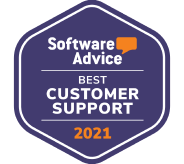In the last few decades, the healthcare industry has completely evolved. The words like x-rays, genome mapping, organ transplant, etc. that are flung around casually now stem from what were once the greatest innovations in the healthcare industry. But this isn’t the only change; patient experience has become as important as medical care. So much so that patients are willing to pay more in exchange for an overall satisfactory experience.
Earlier, patient experience was synonymous with patient satisfaction in terms of medical care. But it has now been well established that there's a significant difference between patient experience and patient satisfaction.
But what exactly makes patient experience? Let’s understand.
Defining Patient Experience
Patient experience is the sum of all interactions a patient has with the healthcare system or facility. This includes interactions with the doctors, nurses, staff members, physician facilities, etc. Other healthcare components, such as care delivery, easy access to information, timely appointments, and clear communication, are also integral to excellent patient experience.
Patient experience encompasses all the interactions patients and their families have with their healthcare providers and facilities. And the experience begins with the first phone call a patient makes to book an appointment and continues right through the treatment and routine checkups after the treatment.
Components that Influence Patient Experience
- How easy or difficult it is to get an appointment with a healthcare professional.
- What the atmosphere of the waiting room is like; is it too hot, cold, or crowded.
- How long a patient waits before meeting a healthcare professional.
- How much time does the healthcare professional invest in understanding patients’ concerns and answering all the questions.
- How friendly and courteous staff members are.
- Whether or not healthcare providers and staff members share critical care plan information with patients and give them options to choose from.
- How effective and latest is the technology being used in a medical facility.
While ensuring patient satisfaction should be the first priority in any medical facility, finding what changes will yield the best results remains a tough task.
To help you make your first step to a big change, let’s discuss in detail some essential elements of patient experience that lead to patient satisfaction.
Important Elements of Patient Experience
1. Easy Access
Easy access is more important in healthcare than any other industry because emergencies can strike at any time. Patients build a perception of a healthcare facility right from the first interaction to book an appointment. Therefore, factors like 24x7 availability, flexible appointments, quick access to medical care, etc., prove to be some critical elements of excellent patient care.
Though many medical facilities take advantage of technology to assure quick and open access to patients, nothing can beat the human element. To deliver excellent patient experiences, your staff must possess the power of observation. This is an important skill to recognize a potential crisis and warning signs, which can not only improve patient experience but also save lives.
2. Comprehensive Care
Whether it’s an acute care hospital, an outpatient facility or a behavioral health hospital, patients and their families prefer healthcare services where comprehensive care is of high importance. This means that medical treatment isn’t the only driver for excellent patient experience anymore. From healthy, timely meals to comfortable hospital gowns to cafeteria and restroom for families, every interaction at the facility influences patient experience.
What a healthcare management team needs is to get an idea of what are all the things that matter to patients by efficiently collecting patient feedback. For example, early discharge for mothers in the maternity ward may be favorable for some families, but to some, it may feel like they are being rushed out. So, it’s important to understand your patients at a more human level and make sure that their care and comfort are at the forefront.
3. Communication with Nurses
You would think that patients only care about effective communication with the doctors to be able to trust them. However, communication with nurses in a healthcare facility has a major impact on patient outcomes because they are responsible for providing compassionate care to patients.
Nurses must be able to show empathy, provide knowledgeable feedback, advocate for the patient, respond to their unmet needs, and build trust because they are the ones who interact with patients day in and day out.
4. Communication with Doctors
The most important thing when patients consult doctors is to know that they are being heard and their concerns understood. Often, when doctors prescribe medications and lay out a treatment plan in front of the patient without discussing the reason for a particular treatment, they keep the patients in dark, which affects their ability to trust the medical expert. And what’s more concerning is that miscommunication in healthcare can lead to serious, irreversible errors.
What patients need is for doctors to see them as partners in their own care. Instead of being given instructions, patients prefer to know why a specific treatment method is chosen and how it will help them recover. Doctors must be able to:
Build Rapport: Make eye contact, give patients undivided attention, and listen to them carefully.
Explain: Engage in conversation with patients and explain the course of and reason for treatment to them in detail.
Collaborate: Collaborate with patients instead of telling them what to do.
5. Proactive Staff
Transferring patients to different wards, starting a new treatment, and continuing treatment with a different specialist – are a few instances that are highly prone to miscommunication since they require the involvement of staff members. And, miscommunication among medical staff at the time of patient transfer attributes to 80% of serious medical errors.
Patients expect the staff to proactively share information in terms of reports, transfers, and payment. Providing patients and their families accurate information about health insurance is extremely important too considering the fact that 80% of patients expect doctors and staff to explain what their insurance covers and what they owe.
6. The Use of Latest Technology
If you were still in the 90s and lost your report, you would probably face a lot of trouble getting access to the report or its copy. But today, you can share your contact details and a medical staff member would instantly pull out the report, saving you tons of time and effort. And that's not it, technology also enables self-service among patients - a factor that can immensely improve the patient experience. This is because 78.8% of patients say that they have used patient portals to access health results and medical records, indicating that tech-savvy patients would prefer self-service if it saves time and effort.
Here are some other ways technology can be super useful:
- Cloud technology improves the accessibility and availability of medical & patient records, enables quick & efficient clinical data analysis, improves patient care, and increases ease of treatment.
- Digital checks and balances alert clinicians of allergies, ensuring safe medication.
- Healthcare mobile apps enable easy medical data access and easy communication between patients and healthcare providers.
- Online patient satisfaction surveys allow measuring patient satisfaction and identifying areas of improvement.
Technology would not only ensure patient's convenience but would also enable you to streamline your healthcare process and optimize efforts to build excellent patient experiences. 
Conclusion
Patient satisfaction is the sum of all great experiences. So, make sure to factor in all the elements discussed above while crafting experiences. Moreover, make sure to capture patient feedback from time to time. Not only will it help you understand patients' expectations, but it will also enable you to bridge the gap between average and excellent patient experiences.
 Integrations
Integrations








-min-1.png)
.jpg)
.jpg)
-1.png)
.jpg)

















